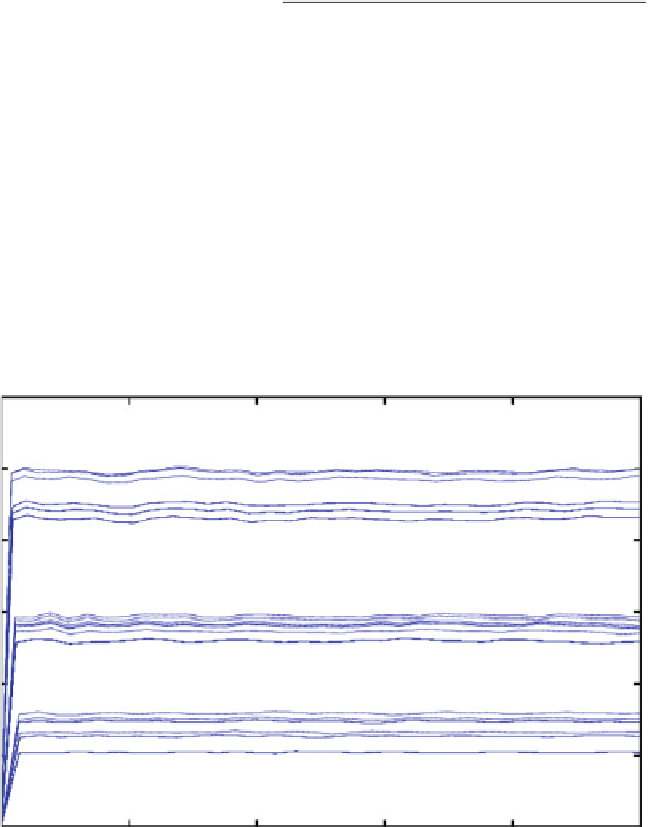Biomedical Engineering Reference
In-Depth Information
Tabl e 5
Three set of
experimental values of rolling
cell percentage (RCP )for
different values of the vessel
diameter D
v
D
v
RCP
D
v
RCP
D
v
RCP
16.6
18
40
9.8
74.6
1.13
16.6
15.5
43.2
5.4
68
6.2
20
14
43
6.7
65
3.7
21
13
42
5.8
65
3.5
20
9.3
45
4.2
68
6.2
25
17.3
43.6
4.7
66.6
2.4
23.8
10.1
44.6
6.5
66.6
3.4
16.6
15.5
40
5.4
66.6
4.7
23.3
9
40
4.9
73.3
1.5
23.3
14
40
7
75
4.8
Estimated
experimental
error
on
rolling
cells
percentage
˙
3
Time behavior of bonds number in rolling (BioSPi model)
300
Rv > 55 micron
250
200
Rv = [35, 35] micron
150
100
Rv = [15, 25] micron
50
0
0
1
2
3
4
5
Time (sec)
Fig. 3
Time evolution of number of bound molecules for three different sets of vessel diameters
values
Dividing the number of bound molecules by the number of lymphocytes present
in the blood flux in contact with the endothelium, we obtain the number of bound
molecules per lymphocyte. This quantity is a measure of the propensity of the cell to
interact with endothelium and to roll. In a simplified model and at the first order of
approximation, the probability that a lymphocyte rolls on endothelium is directly
proportional to this propensity. Writing the number of lymphocyte of the blood


